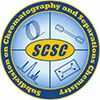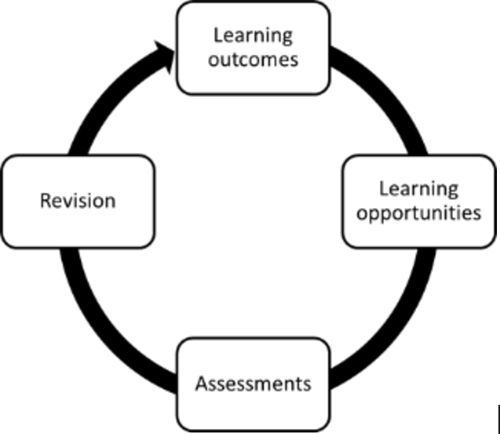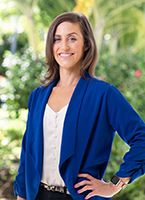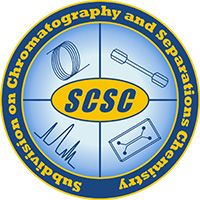The LCGC Blog: Experiential Learning Interrupted: Reflecting on Teaching Chromatography During a Pandemic
As our academic year comes to end, I always take time to reflect on what I have learned in the past year. As an assistant professor in Forensic Sciences and Chemistry at Chaminade University of Honolulu, I take the opportunity to review my courses regularly and implement new tools. Some of them will be successful and others will not.

This blog is a collaboration between LCGC and the American Chemical Society Analytical Division Subdivision on Chromatography and Separations Chemistry.
As our academic year comes to end, I always take time to reflect on what I have learned in the past year. As an assistant professor in Forensic Sciences and Chemistry at Chaminade University of Honolulu, I take the opportunity to review my courses regularly and implement new tools. Some of them will be successful and others will not. I have come to accept that teaching is a process. I will never create a perfect course that I teach repeatedly. My courses evolve with new research developments, new pedagogical techniques, and new generations of students coming our way.
Simultaneously, I take time to reflect on our research over the past year. I am the principal investigator of the Laboratory of Forensic and Bioanalytical Chemistry, and lead a team of talented undergraduate researchers. I think of how their training has progressed, the experiments we have run, and the publications we have submitted. There is always something you wish you approached differently, but you learn to take a bird’s eye view and celebrate the achievements.
This year, of course, is different. How could any of us have seen this pandemic coming and planned appropriately? I am sure that many of you across the globe are learning new skills out of necessity given our new reality of physical distancing, online education, restricted access to laboratory facilities, and-quite frankly-just trying to cope with a new normal for our personal lives. Nevertheless, I think of how far my group has come under these circumstances and I am pleased. Most importantly, we learned to adapt and continue our forward momentum. We learned tools like Zoom and Google Apps that we will continue to use even when we go back to the laboratory. There are downstream effects of this situation that could increase productivity in the classroom and for research, so I am grateful.
I teach courses that have a significant component of chromatography, largely involving gas chromatography (GC) and comprehensive two-dimensional gas chromatography (GC×GC). When faced with the challenge of implementing nine hours of hands-on laboratory per week in a distance-learning format, I felt lost at first. How could I possibly make any online activity as impactful as the hands-on interaction with analytical instrumentation? How could I encourage confidence in my students to work with intimidating instrumentation from behind my desk at home?
My approach to teaching the Instrumental Analysis course had to change drastically. The students in this course typically perform a guided research project using GC through half of the semester, and that simply wouldn’t be feasible. I pivoted, and came up with a new approach. I decided to work with ChromAcademy and treat the students as if they had just landed an entry-level job in an analytical laboratory. I created learning pathways with different materials they had to complete in a specific order, as if they had just been hired for a new job and were undergoing training.
Next, I had the students complete a series of activities. Some required them to look up scientific literature and link it to course content, while others were hypothesis-driven guided activities. I incorporated chromatograms and spreadsheets with actual data, but also had to keep everything platform neutral (for example, many of our students do not have access to Microsoft Office). The students had to use data from the instrumentation to answer questions. One interesting activity was developed in collaboration with scientists at LECO Corporation, where students had to guess the flavor of jellybeans based on chromatographic data. I was pleasantly surprised at their ability to pick up disciplinary terminology and concepts with this new approach. Reading through the responses to their assessments, they sounded like professionals. This is exactly what I had hoped for, and something I had never thought to implement in my face-to-face course that I will probably continue to use in the future.
Their final task was to choose a topic and create a “training poster” for a newcomer to the laboratory. I generally try to emphasize communication skills and scientific writing in my analytical courses, as I believe these skills are essential for analytical chemists. This assignment got them thinking creatively about both chromatography and how to translate what they had learned into a simple format. I’m not saying this new approach was perfect, but I think this combination of activities worked to accomplish our learning outcomes.
At the end of semester, I’ll receive a collection of course evaluations. I dedicate time to read through everything, and make points about what I can change over the summer. Sometimes I reach out to colleagues in industry to ask them for advice on how I can make things more realistic or enforce attributes they are looking for in employees. This year, reading those evaluations will be different. Many students encountered serious personal challenges this semester. We had to change to online content literally overnight. I am excited and nervous to see how these new activities were perceived. I emphasize to myself that teaching is a process. I will take the feedback and plan for the fall, when we could be teaching partially on ground with modified practices, or potentially be online again depending on how things progress. At least I will have some data from this semester to help make decisions on how I’ll teach about analytical instrumentation.
What’s missing in the world of online education for chromatography? It would be a missed opportunity if I didn’t take this change to make a request of our community. In my opinion, it is really challenging to find platforms that teach at the introductory level required for undergraduate education. First and foremost, the material has to be engaging and not intimidating. The material needs to be digestible and explicit. The second major missing link is to implement training tools that enable tracking and assessment. For example, I might be find a great introductory video, but I have no way of tracking whether the students have watched it or to measure the new knowledge they acquired.
For those of you who are not in higher education, this is what I want to call “Teaching 101.” I have included a popular flow chart that summarizes course assessment. First, courses need to have measurable learning outcomes. We have to define what we want students to be able to do when they complete their learning. Second, we implement learning opportunities. Third, we assess these learning opportunities to measure whether learning has met the outcomes. As an analytical chemist based in measurement science, I think fondly of this concept! Finally, we take feedback from the assessment and revise the learning opportunities. Based on my frantic mid-semester search for online teaching resources, this framework is mostly absent in online resources for chromatography learning. I had to find online tools that I could use as learning opportunities, and build a patchwork of the other components surrounding them; this is an approach that can work, but may appear less cohesive to the learner.
Figure 1: Teaching, learning, and assessment cycle. Adapted from (1).

Thinking about online education in chromatography in this way has given me some ideas for new assignments I can develop, some which could be delivered online or face-to-face in a laboratory. I am even playing with the idea of how to make these assignments openly available to other educators. As distance-learning becomes more and more popular, we need to think creatively about how to teach laboratory skills in the digital world.
While I am incredibly positive about the skills I have learned from teaching the next generation of analytical chemists through this pandemic, one thing has become abundantly clear to me. Students need hands-on experiential learning. I can’t count how many of my students have reached out to me saying how much they miss laboratory classes. Some have even expressed disappointment about not being able to work with our GC instruments for fear they won’t be competitive on the employment market when they graduate. Students value the hands-on laboratory classes just as much as we enjoy teaching them.
I personally can’t wait to get back into the classroom. Right now, the future of our teaching methods for next year is evolving, just as most other aspects of our lives are changing on a daily basis. What a great opportunity to take the best of what has happened this year and implement it to teach chromatography more effectively in the future.
References
(1) L. Suskie, Summarizing, Understanding and Using Assessment Results, presented at Penn State Harrisburg on May 10, 2012.

Katelynn A. Perrault is an assistant professor of Forensic Sciences and Chemistry at Chaminade University of Honolulu. She specializes in the analysis of decomposition odor for forensic search and recovery, and mentors numerous undergraduate researchers as part of her integrated teaching and research program. Her current interests include odor production from post-mortem microbes, development of GC×GC data processing workflows for dual-channel detection, promoting the adoption of GC×GC in the forensic sciences, and establishing GC×GC curriculum to be taught in undergraduate chemistry classes. Perrault was recently named the 2019 American Chemical Society Division of Analytical Chemistry Satinder Ahuja Young Investigator in Separation Science. Direct correspondence to katelynn.perrault@chaminade.edu.

This blog is a collaboration between LCGC and the American Chemical Society Analytical Division Subdivision on Chromatography and Separations Chemistry (ACS AD SCSC). The goals of the subdivision include
- promoting chromatography and separations chemistry
- organizing and sponsoring symposia on topics of interest to separations chemists
- developing activities to promote the growth of separations science
- increasing the professional status and the contacts between separations scientists.
For more information about the subdivision, or to get involved, please visit https://acsanalytical.org/subdivisions/separations/.
The LCGC Blog: Historical (Analytical) Chemistry Landmarks
November 1st 2024The American Chemical Society’s National Historic Chemical Landmarks program highlights sites and people that are important to the field of chemistry. How are analytical chemistry and separation science recognized within this program?
